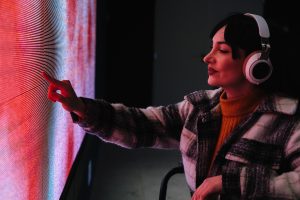If these walls could talk, would they tell your brand’s story?
Every building tells a story. In brand experience, architecture isn’t just the setting, it shapes the narrative. By listening to a venue’s history, quirks, and imperfections, brands can create experiences that feel authentic, seamless, and unforgettable, says Dan Colborne, Executive Creative Director at Identity.
Architecture isn’t just the backdrop to an event, it’s part of the narrative. Buildings speak through their walls, their history, their scale, and even their imperfections. If we ignore that voice, we risk creating a disconnected brand story. If we listen, we can elevate the brand narrative and human experience.
A building should never compete with a brand, but nor should a brand fight the space it inhabits. The most successful experiential activations are those where the two feel as if they belong together; where the character of the venue enhances the message rather than distracts from it.
The power of imperfections
A perfect, polished environment isn’t always the answer. Sometimes, a scar in the plaster or a creak in the floorboards tells a more powerful truth than pristine glass and steel. Those imperfections can be woven into the brand story, making it feel human, real, and rooted in something tangible.
Equally, we should be wary of over-romanticising the “classic” venue. A building with history and grandeur can be seductive, but it isn’t automatically the right choice. A neoclassical hall might impress guests, but if the brand narrative is about innovation or challenging convention, hosting in a space heavy with tradition could pull the story in the opposite direction.
Designing with the building in mind
At the outset of any creative development, we must consider architecture as part of the design process. What does this building say? Does it echo the brand’s purpose, or does it argue against it? Can we reinterpret its features – its light, its lines, its scars – to reinforce what the brand wants people to feel? Architecture, after all, is storytelling in stone.
Embracing quirks
Some of the most memorable experiences come when a brand dares to embrace a venue’s quirks rather than cover them up. Instead of disguising a cracked column, we might spotlight it as a metaphor for resilience. Instead of drowning out a cavernous echo, we could design sound to work with it, amplifying a sense of scale. In doing so, the brand demonstrates adaptability and creativity – qualities that audiences instinctively admire.
A conversation between brand and building
Ultimately, architecture gives us a partner in brand storytelling. It lends weight, context, and texture in ways no temporary set can replicate. But it requires humility: to listen to the building, to respect its language, and to weave its imperfections into the narrative.
When done well, brand and building don’t compete for attention. They converse, enrich one another, and leave audiences with an experience that feels inevitable, as though it could only have happened in that exact space.




